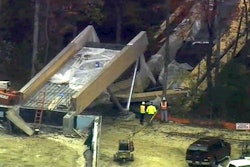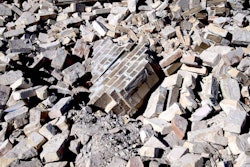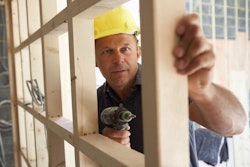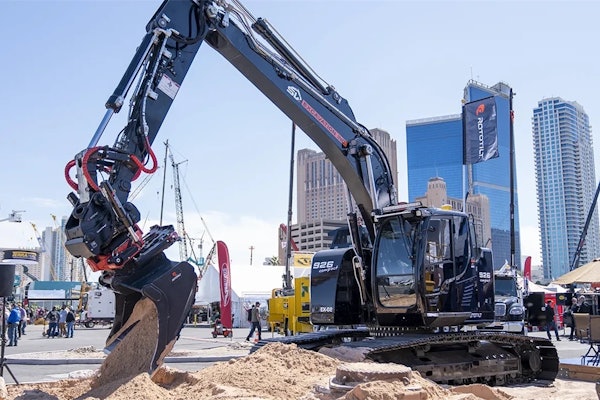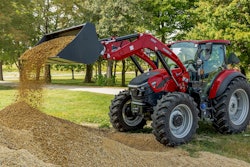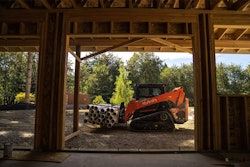 The Bering Bomb. A view of the Pacific typhoon that hit Alaskan islands before weakening and sending cold air across the U.S. Credit: NASA
The Bering Bomb. A view of the Pacific typhoon that hit Alaskan islands before weakening and sending cold air across the U.S. Credit: NASAAfter the remnants of a Pacific typhoon sent arctic air across much of the United States last week, temperatures dipped to unseasonable lows across the country, making the jobs of many construction workers that much harder.
In Chattanooga, Tennessee, road crews working a project on Highway 27 are used to cold weather, but said the sudden shift from a 70-degree workday to one in the 40s was “tough,” according to a report from WRCB TV. Job superintendent Shaun Ryder told the station his workers stayed on schedule by layering up and drinking a lot of hot coffee to get through the cold snap.
In Minneapolis, the cold snap actually increased the number of workers building a new stadium for the Minnesota Vikings. According to a report from CBS Minnesota, Mortenson Construction increased its workforce by 10 percent in order to build heated enclosures and warming houses to keep the cold away from co-workers.
But not all the work can be done within the enclosures and for that, Mortensen has two solutions: layers and longer hours. According to CBS Minnesota, because the cold complicates the normal day-to-day, workers actually put in more hours on cold days, arriving at 7 a.m. and leaving at 10 p.m.
And while you might think construction workers in Minnesota are completely used to this type of cold, worker Dan Fox admits, “It gets difficult. Hardest part is keeping your hands and feet warm,” he told CBS.
Finally, in Sioux City, Iowa, high temperatures in the latter part of last week only reached the teens and 20s, according to a report from ABC 9 News. Crews with contractor Knife River working a project along Interstate 29 fought back the cold with stretches and exercises to stay warm along with the more common solutions of ground heaters and, of course, more layers of clothing.
“Construction has become more of a year-round activity than seasonal as it used to be,” Knife River’s Dan Lewis told ABC 9. “And so we do stretch the construction season, especially in these northern regions, until we absolutely can’t work anymore.”
